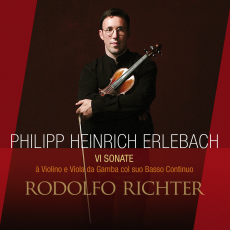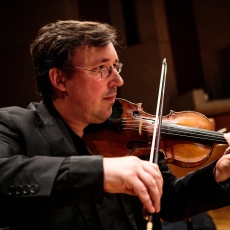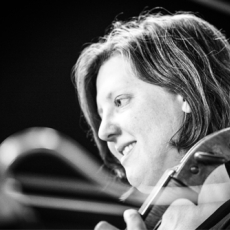Erlebach - Richter - International Record Review
We'd know much more about Philipp Heinrich Erlebach if 90 per cent of his music - around 1000 works - hadn't gone up in smoke in a fire which swept through the court library in Rudolstadt in 1735. Happily, he got round to publishing six sonatas (1694) performed here, works of considerable quality which display his interest in mixing Italian and German predilection for unusual sonorities and contrapuntal enrichment. Although designated 'sonatas', the six works are in fact French-style suites in which a fluid three-part introductory movement is followed by the standard line-up of Allemande - Courante - Sarabande - Gigue. The texture is that of an unconventional trio sonata, in which the viola da gamba is an equal partner with the violin, underpinned by an independent continuo. Unlike Buxtehude in his trio sonatas, where the gamba is used alternately in its upper and bass registers, Erlebach writes for the gamba exclusively as a second upper voice. This produces a wonderfully sinewy sonority in which the two instruments are much more clearly differentiated than the usual two-violin pairing - something which is made great capital of here by fiddler Rodolfo Richter and gambist Alison McGillivray. Erlebach's interest in sonority in further displayed in this stipulation of different scordatura tunings for the violin in Sonatas Nos 3 and 4 and 6. By tuning the violin to different strings from normal the sound and resonance of the instrument changes and it becomes possible to play chords and musical figures which would not otherwise be possible.
Richter further differentiates the sonata by playing four different period instruments - including a warm Andrea Guarnieri (1674) and a chirpy Jacobus Stainer piccolo violin, which, as its name suggests sound an octave higher than usual. There's plenty of variety in the continuo too, with a deep violone sustaining the bass line, lots of foreground lute decoration from Eligio Quinteiro and some particularly rich contributions from the chamber organ, which help make the Second and Fifth Sonatas real highlights. Richter and McGillivray approach the music with an essentially light touch, with bows dancing, crisp articulation and unfurrowed brows. Their unforced elegance pays rich dividends in the haunting, deeply felt opening to the B minor Sonata and the conversational interplay between soloists in the following fugato.
I find this new recording utterly beguiling for its intimacy and directness. Nothing is exaggerated or thrust at us: the revelations come with repeated listening. The sound is up to Linn's usual high standards. Perfect for late-night listening.


